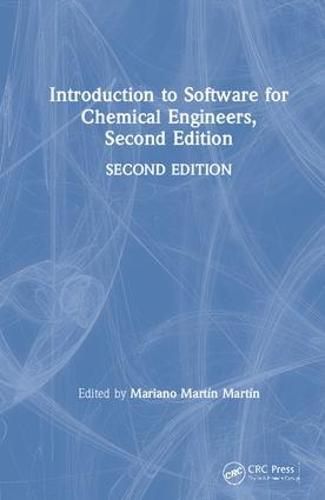Readings Newsletter
Become a Readings Member to make your shopping experience even easier.
Sign in or sign up for free!
You’re not far away from qualifying for FREE standard shipping within Australia
You’ve qualified for FREE standard shipping within Australia
The cart is loading…






The field of Chemical Engineering and its link to computer science is in constant evolution and new engineers have a variety of tools at their disposal to tackle their everyday problems. Introduction to Software for Chemical Engineers, Second Edition provides a quick guide to the use of various computer packages for chemical engineering applications. It covers a range of software applications from Excel and general mathematical packages such as MATLAB and MathCAD to process simulators, CHEMCAD and ASPEN, equation-based modeling languages, gProms, optimization software such as GAMS and AIMS, and specialized software like CFD or DEM codes. The different packages are introduced and applied to solve typical problems in fluid mechanics, heat and mass transfer, mass and energy balances, unit operations, reactor engineering, process and equipment design and control.
This new edition offers a wider view of packages including open source software such as R, Python and Julia. It also includes complete examples in ASPEN Plus, adds ANSYS Fluent to CFD codes, Lingo to the optimization packages, and discusses Engineering Equation Solver. It offers a global idea of the capabilities of the software used in the chemical engineering field and provides examples for solving real-world problems.
Written by leading experts, this book is a must-have reference for chemical engineers looking to grow in their careers through the use of new and improving computer software. Its user-friendly approach to simulation and optimization as well as its example-based presentation of the software, makes it a perfect teaching tool for both undergraduate and master levels.
$9.00 standard shipping within Australia
FREE standard shipping within Australia for orders over $100.00
Express & International shipping calculated at checkout
The field of Chemical Engineering and its link to computer science is in constant evolution and new engineers have a variety of tools at their disposal to tackle their everyday problems. Introduction to Software for Chemical Engineers, Second Edition provides a quick guide to the use of various computer packages for chemical engineering applications. It covers a range of software applications from Excel and general mathematical packages such as MATLAB and MathCAD to process simulators, CHEMCAD and ASPEN, equation-based modeling languages, gProms, optimization software such as GAMS and AIMS, and specialized software like CFD or DEM codes. The different packages are introduced and applied to solve typical problems in fluid mechanics, heat and mass transfer, mass and energy balances, unit operations, reactor engineering, process and equipment design and control.
This new edition offers a wider view of packages including open source software such as R, Python and Julia. It also includes complete examples in ASPEN Plus, adds ANSYS Fluent to CFD codes, Lingo to the optimization packages, and discusses Engineering Equation Solver. It offers a global idea of the capabilities of the software used in the chemical engineering field and provides examples for solving real-world problems.
Written by leading experts, this book is a must-have reference for chemical engineers looking to grow in their careers through the use of new and improving computer software. Its user-friendly approach to simulation and optimization as well as its example-based presentation of the software, makes it a perfect teaching tool for both undergraduate and master levels.